As far as can be ascertained the county of Ceredigion has no county Boer War Memorial, unlike the neighbouring counties of Carmarthenshire and Pembrokeshire. The county town, however, was justifiably proud to have supplied an entire Company, F (Cardigan Volunteer) Company, to the 1st (Pembrokeshire) Volunteer Battalion, Welsh Regiment which took part in the conflict and as a result commissioned a fine marble scroll to commemorate the Company. This scroll was erected in the towns Guildhall in December 1903 and was unveiled by Mrs Delmé Davies-Evans, owing to her husband, Colonel Davies-Evans, lord lieutenant, of Highmead, being ill.
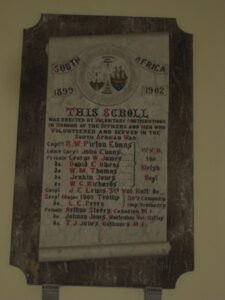
The details inscribed on the memorial are:
“This scroll was erected by voluntary contributions in honour of the officers and men who volunteered and served in the South African War.
Captain R. W. Picton-Evans; Corporal John Evans; Privates G. W. James, D. E. Owens, W. M. Thomas, Jenkyn Jones and W. G. Richards, and all of “F” Company (Cardigan), 1st V. B. Welsh Regiment; Corporal John Lewis, 3rd V.B. Welsh Regiment; Sergeant-Majors Ivor Trollip and L. E. Perry, 30th Company, Imperial Yeomanry; Private Arthur Storey, Canadian Mounted Infantry; Private Johnny Jones, Woetanhog Volunteer Rifles; and Private T. J. Jones, St. Dogmaels, Bethune’s Mounted Infantry.”
The county of Ceredigion did, however, suffer several casualties during the war and as there appears to be no known county war memorial for them, I have researched and written this page onto the website.
The Anglo-Boer War, 1899-1902
Alfred Richard Glynn Begbie, Captain, Royal Garrison Artillery. Alfred was the son of Alfred Richard Glynn Begbie and Henriette Edith Begbie (nee Lloyd-Philipps), of Llanrhystud and grandson of Colonel Lloyd-Philipps, of Dale Castle, Pembrokeshire. He was educated at Haileybury and was commissioned into the Royal Artillery from the Royal Military Academy on 15 June 1895 and embarked for South Africa with the 75th Battery Royal Field Artillery, shortly before the war broke out. He was present at the actions of Belmont, Graspan, Modder River (mentioned in despatches), and Magersfontein, and also at the capture of Jacobsdal, and the battle of Paardeberg. At Modder River he was suddenly placed in command of his battery, and was mentioned in despatches again for ‘very marked gallantry in action’. He was transferred to T Battery Royal Horse Artillery and served at the capture of Johannesburg and in the actions at Diamond Hill and Belfast. He was then promoted captain and given command of a Pom-Pom section before joining Rimington’s column, which he was serving with when he was shot in the heart and killed while rallying some New Zealand troops at Holspruit on 14 February 1902. He was 26 years old. There is a very fine memorial window to him in St. Rhystud’s Church, Llanrhystud.
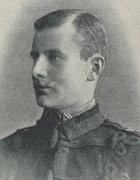
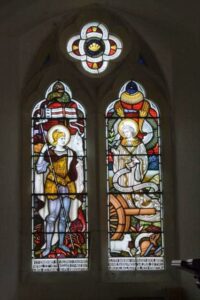
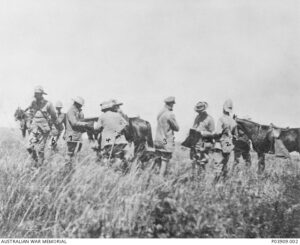
Isaac Evans, Private, 5790, Grenadier Guards. Isaac was from Cardigan and served with the 3rd Battalion, Grenadier Guards. He died at Bloemfontein on 2 April 1900.
Thomas Jacob, Private, 3111, Grenadier Guards. Thomas was from Aberystwyth and enlisted into the 2nd Battalion, Grenadier Guards on 29 July 1891. He died at Howick on 28 December 1900.
Isaac Clayton Jones, Orderly, Civil Surgeons and Ambulances. Isaac was the son of Captain Evan Jones, and Anne Jones, of 4, Chalybeate Terrace, Aberystwyth. He was a volunteer orderly for the St. John’s Ambulance Brigade and had helped bring home a number of sick and wounded men in 1900, before returning to South Africa to continue his work. He died of Enteric Fever at Mooi River on 20 December 1900 aged 28.
Nathaniel Jones, Corporal, 9714, Royal Army Medical Corps. Nathaniel was the son of Evan and Mary Jones, of Tregaron. He was a married man: his wife Sarah lived with their three young children at Newport, Isle of Wight. Nathaniel served with 9 Bearer Company, Royal Army Medical Corps, which was attached to the 1st Cavalry Brigade which was initially stationed in Cape Town. Nathaniel was then posted to Bloemfontein. He died of Enteric Fever at Naauw Poort on 6 June 1900, aged 25. His father had been killed in the Penygraig Colliery disaster nineteen years earlier.
William Lee, Colour Sergeant, 1023, King’s Shropshire Light Infantry. William was the son of John and Charlotte Lee, of Chalybeate Street, Aberystwyth. He worked at Hodnet, Shropshire prior to embarking for South Africa with the 2nd Battalion, KSLI. William died of Enteric Fever at Bloemfontein on 13 April 1901, aged 29.
Arthur Percival Lloyd, Private, 9303, Wiltshire Yeomanry. Arthur was the son of John Phillips Lloyd and Rachel Lloyd, of Penralltybie, Llandygwydd. He died while serving with the 1st Battalion, Wiltshire Yeomanry at Bloemfontein on 3 July 1900, aged 22, and is buried in Knysna Old Cemetery, Western Cape.
George Evan Lloyd, DSO, Lieutenant Colonel, Duke of Wellington’s (West Riding) Regiment. George was born in 1855, the son of Reverend Rhys Thomas Lloyd and Anna Lewis Lloyd, of Troedyraur Rectory, Penboyr. His uncle was Baronet Lloyd, of Bronwydd. He was educated at Tonbridge School and joined the 70th Foot from the Royal East Middlesex Militia in 1876. He had served with the 51st Light Infantry in the Jowaki Expedition, 1877, and then in the Afghan War, 1878-79, and was present at the attack and capture of Ali Musjid. He was in the Nile Expedition, 1884-85 as commandant at Tangur, and was mentioned in despatches on 25 August 1885. He then served with the Sudan Frontier Field Force, 1885-87, and was again mentioned in despatches and awarded the DSO. He was present at the action at Sarras, again being mentioned in despatches, and then took part in the operations near Suakin in December 1888, where he was again mentioned in despatches. He commanded a field column under Lord Kitchener with the Dongola Expeditionary Force, a command which led to his promotion to Lieutenant Colonel and him being given command of the 1st Battalion, West Riding Regiment. He proceeded to South Africa with his battalion in December 1899, and commanded it throughout the war, including the relief of Kimberley, battle of Paardeberg, and the advance on Bloemfontein and into the Transvaal. He was killed in action at Rhenosterkop on 29 November 1900, aged 45, and is buried in Diamond Hill Military Cemetery. The Boer General Ben Viljoen later wrote of his death: ‘A brave officer who had one of his legs smashed, leant on a gun or his sword, and kept on giving his orders and cheering the soldiers and telling them to charge on. While in this position a second bullet struck him, and he fell mortally wounded.’
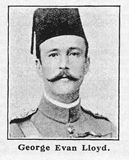
Marion Lloyd, A.N.C., R.R.C., Sister, Army Nursing Service. Marion was the daughter of John Phillips Lloyd and Rachel Lloyd, of Penralltybie, Llandygwydd, Cardiganshire. She had been Matron of the Bolton Infirmary, before volunteering to join the staff of the Welsh Hospital in South Africa as Matron. She was gazetted with the Royal Red Cross for her work in South Africa, and had been asked to join the medical staff in Bechuanaland, but became ill, and died at Springfontein on 17 December 1901, aged 35. Marion is buried in Springfontein Military Cemetery.
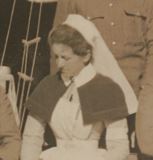
Evan Jones Williams, Rifleman, 9479, Rifle Brigade. Evan was born at Talyllyn in 1877 and had lived in Aberystwyth before enlisting into the 2nd Battalion, Rifle Brigade. He was killed in action at Bergendal, Transvaal on 27 August 1900, aged 23.
John David Williams, Private, 28254, Imperial Yeomanry. John was the son of David and Emily Williams, Amwell Cottage, Great Percy Street, London. He was a former pupil of Ardwyn School, Aberystwyth. He served with the 82nd (Sharpshooters) Company, 21st Battalion, Imperial Yeomanry and died of enteric fever at Standerton on 4 January 1902, aged 23.
Thomas Williams, Gunner, 65617, Royal Field Artillery. Thomas was from Cardigan. He served with the 44th Battery, Royal Field Artillery. He drowned in the Orange River on 2 April 1900.
Some Other Boer War Heroes
Harry James Ap-Owen Bowen, Captain, Kimberley Light Horse. Harry was born 9 February 1867, third son of the Reverend Arthur James Bowen, JP, and Gertrude Olivia Bowen (née Cannon), of Troedyraur, Cardiganshire. He was educated at Monkton Combe School, near Bath, before becoming a solicitor, and was a steward of the Jockey Club of South Africa. He served in the South African War, 1899-1900; was severely wounded, mentioned in Despatches [London Gazette, 10 September 1901]; received the Queen’s Medal with two clasps, and was created a Companion of the Distinguished Service Order [London Gazette, 27 September 1901]: “Harry James Ap-Owen Bowen, Captain, Kimberley Light Horse. In recognition of services during the operations in South Africa”. He married, in 1905, Amy Langford Pote. His nephew, Eynon George Arthur Bowen, of Nevern, was killed in WW1.
The Earl of Cardigan, George William Chandos, DSO, Marquis of Ailesbury, Captain, Imperial Yeomanry. George was born on 21 May 1873, son of the Most Honourable Henry Augustus Brudenell-Bruce, 5th Marquess, and Sophia Maria, daughter of G H Pinckney, of Tavistock Court, Barnstaple. He was educated at Westminster, and joined the 3rd Battalion, Argyll and Sutherland Highlanders, before serving with the Royal Wiltshire Yeomanry. In November 1899, by now Lord Cardigan, he went to India and was there when the Boer War erupted. He volunteered for military service and was employed with the transport department of the Natal Field Force from 23 October 1899, up to the Relief of Ladysmith. He then transferred to the 3rd (Sherwood Foresters) Battalion, Imperial Yeomanry under Colonel Younghusband. He then took command of Major General Smith-Dorrien’s transport in the advance from Kronstad to Pretoria and took part in several operations under Lord Kitchener in pursuit of De Wet, and in the Relief of Colonel Hore’s force, at Elands River. For his services in this campaign, Lord Cardigan was mentioned in Despatches (London Gazette, 10 September 1901), and was given a commission in the Regular Army, dated 29 August 1900, in the 11th Hussars, which a former Lord Cardigan had led in the Charge of the Light Brigade at Balaklava. He was then attached to Paget’s force, and was created a Companion of the Distinguished Service Order (London Gazette, 27 September 1901): “George William Chandos, Earl of Cardigan, Captain, Royal Wiltshire Yeomanry Cavalry. In recognition of services during the operations in South Africa”. He was later knighted before entering politics and became a leading member of the British Fascist Party. He died on 4 August 1961.
Charles Herbert Davis Cass, Captain, Welsh Regiment. Charles was born on 13 August 1858, eldest son of the Reverend Charles William Cass and Elizabeth Frances Cass. He was educated at Winchester and was commissioned into the 69th Foot on 13 July 1878, becoming Lieutenant, Welsh Regiment, on 2 February 1881, and Captain on 19 January 1888. He served in the South African War, 1899-1902, taking part in operations in the Transvaal in May and June, 1900; operations in the Transvaal, east of Pretoria, July to 20 November 1900, including action at Reit Vlei; operations in Cape Colony, north of Orange River, May 1900; operations in the Transvaal 30 November to December 1900; operations in Orange River Colony, December 1900 to April, 1901. He was mentioned in Despatches (London Gazette, 10 September 1901); and was created a Companion of the Distinguished Service Order, for defending Eland’s River with about 180 men against some 500 Boers with three guns (London Gazette, 27 September 1901): “Charles Herbert Davis Cass, Captain, Connaught Rangers. In recognition of services during the operations in South Africa”. The Insignia were presented by the King 28 March, 1903. He was promoted to Major 27 August 1902, and retired from the Worcestershire Regiment 6 July 1904. Major Cass was appointed High Sheriff for Cardiganshire in 1913. He was a Justice of the Peace for Cardiganshire. He served on the Army Recruiting Staff (voluntarily) from 1917 to 1919. He died at home at Dol-Llan, Llandyssul on 24 June 1929.
Herbert Owain Pugh, Lieutenant, Lumsden’s Horse. Herbert was born on 9 July 1874, the son of Lewis Pugh Pugh, MP, DL, of Abermaed, Cardiganshire, and of Veronica Harriet Pugh (née Hills), of Cymmerau, Cardiganshire. He was educated at Sherborne and Rugby, and became a Merchant in India (1891-1900). He proceeded to South Africa with Lumsden’s Horse in 1900, and was appointed Assistant District Commissioner, Heilbron, in 1900. He joined the South African Constabulary in 1901. For his services in the South African War he was created a Companion of the Distinguished Service Order (London Gazette, 19 April 1901): “Herbert Owain Pugh, Lieutenant, Lumsden’s Horse. In recognition of services during the operations in South Africa”. In 1908 he was appointed Secretary to the Territorial Force Association of the Counties of Carmarthen, Cardigan and Pembroke. In 1914 he assisted in raising the Welsh Horse, and was gazetted a Major 30 August 1914. He served in Gallipoli, Egypt and Palestine, and was appointed Second-in-Command of the Berkshire Yeomanry in March 1917. He was severely wounded at Gaza 19 April 1917, and invalided on account of wounds 7 May 1918. Major Pugh was married and had one son and one daughter. He died on 16 February 1954.
William Esmond Logan Stewart, Captain, Welsh Regiment. William was born on 8 October 1873, at Rhosygilwin, Cilgerran, the son of Captain James Stewart, of the Madras Horse Artillery, of Alltyrodyn, Llandyssul, JP and DL for Cardigan, and of Louisa Charlotte, daughter of William Butler, Madras Army. He was educated at Winchester, and was commissioned into the Welsh Regiment on 29 May 1895, becoming Lieutenant on 3 February 1898. He served throughout the South African Campaign, 1899-1902, with the 1st Mounted Infantry from October 1899 to December 1901, first in command of Maxim guns, and later in command of a company and Maxims. He was present at the Relief of Kimberley, Paardeberg, Driefontein, Sanna’s Post, and at the advances on Brandfort, Zand River, Vet River, Johannesburg and Diamond Hill; at the operations southeast of Pretoria: the advance on Middelburg (Transvaal); Belfast, and advance on Komati Poort. He was later with Colonel Williams’ Column pursuing Kritzinger, De Wet and others in Cape Colony and Orange River Colony. After January to the end of the war he was ADC to General Sir E A H Alderson, CB, ADC, Commanding the Mounted Infantry in South Africa. He was mentioned three times in Despatches; and was created a Companion of the Distinguished Service Order (London Gazette, 31 October 1902): “William Edmond Logan Stewart, Captain, The Welsh Regiment. In recognition of services during the operations in South Africa”. He was promoted to Captain 22 January 1902. He left the Army on 2 May 1906, on retired pay, and joined the Pembrokeshire Yeomanry. Major Stewart mobilized with the Pembrokeshire Yeomanry at the beginning of the European War, but was invalided out owing to a badly broken skull on 9 April 1916. Major Stewart formerly hunted and played polo, but had to give up these pursuits as his wounds prevented him from riding. He used to shoot and was fond of fishing. On 30 January 1908, at Tilmanstone, Kent, he married Mary Adela Morland Rice, daughter of Major C A Rice, RE, of Danefield House, Eastry, Kent, and their children were: John Logan, born 16 May 1911, and Mary Elizabeth. He died on 15 February 1964.
Sir Godfrey Vignoles Thomas, Lieutenant Colonel, Royal Artillery. Sir Godfrey was born on 21 March, 1856, at Hafod, Cardiganshire, son of Sir Godfrey John Thomas, 8th Bart, and Emily, daughter of WILLIAM Chambers. He succeeded his father as 9th Baronet in 1861; was educated at Brighton College, and at the Royal Military Academy, Woolwich, and was gazetted to the Royal Artillery 28 January 1875. He served in the Afghan War, 1878-79, being present at the occupation of Kandahar and Khelat-i-Ghilzai (Medal). He served in the Egyptian Expedition, 1882-84, and was present at the action at Kassassin of 9 September; at the Battle of Tel-el-Kebir, and the forced march to Cairo. He was promoted to Captain 1 January 1884, and in that year served in the Sudan, being present at the Battle of Teb, where his horse was shot from under him, the Relief of Tokar, Battle of Tamai, and affair at Tamanieh. He was Adjutant, Royal Artillery, 2 April 1890 to 2 March 1892, and became Major 3 March 1892. He served in the South African War, 1899-1901, being present in the advance on Kimberley and at the Relief of Kimberley. Operations in the Orange Free State, February to May 1900, including operations at Paardeberg; actions at Poplar Grove, Driefontein, Karee Siding, Houtnek (Thoba Mountain), Zand River and Vet River (5 and 6 May); operations in the Transvaal in May and June, 1900, including actions near Johannesburg, Pretoria and Diamond Hill; operations in the Transvaal, west of Pretoria; operations in Orange River Colony, including actions at Bethlehem and Wittebergen. He was mentioned in Despatches (London Gazette, 16 April and 7 May 1901); and was created a Companion of the Distinguished Service Order (London Gazette, 19 April, 1901): “Godfrey Vignoles Thomas, Bart., Lieutenant Colonel, Royal Artillery. In recognition of services during the recent operations in South Africa”. He was invested by the King 17 February 1901. Sir Godfrey Thomas became Lieutenant Colonel 14 November 1900, and was given the Brevet of Colonel 10 February 1904, becoming Colonel 6 August 1906. He was created a CB in 1904; was Staff Officer for Horse and Field Artillery, Southern Command, 6 August 1906 to 21 December 1907 and retired 18 January 1911. He served in the Great War as Brigadier General, 3rd Division, Royal Artillery, 1914-17. Sir Godfrey Thomas died in 1919. He had married, 30 April 1887, in London, Mary F Isabella, daughter of C Oppenheim, of 40 Great Cumberland Place, London and they had one son, Godfrey John Vignoles Thomas, born 14 April, 1889.
Charles Davies Vaughan, Captain, Border Regiment. Charles was born at Brynog, Cardiganshire, on 22 August 1868, son of Captain Herbert Vaughan, late 68th Regiment, and of Mrs Vaughan, of Whittington, Worcester. He was educated at Cherbourg Naval College (May 1880 to August 1881), and at the United Services College, Westward Ho! (September 1881 to December 1887). He was gazetted to the Border Regiment, 8 June 1889, as Second Lieutenant, and became Lieutenant 11 November 1891. He served with the Waziristan Expedition, 1894-95 (Medal with clasp); served on the North-West Frontier of India, 1897-98, as Regimental Commandant; Transport Officer, 1st Brigade (28 October to November 1897). He was promoted to Captain 11 November 1898, and served in the South African War, 1899-1902; took part in the operations in Natal, 1899; at the Relief of Ladysmith, including operations of 17 to 24 January 1900 and was severely wounded on 20 January. He then took part in the operations on Tugela Heights (14 to 27 February 1900) and the action at Pieter’s Hill; in the Orange Free State, April and May 1900; in the Transvaal in June 1900; in the Transvaal, east of Pretoria, July 1900; in the Transvaal, west of Pretoria, July to November 1900; in Orange River Colony (May 1900); in Cape Colony, south of Orange River, 1899; also during the operations in Cape Colony, north of Orange River, May 1900; afterwards employed under Military Governor, Orange River Colony, from 5 November 1900. He was mentioned in Despatches (London Gazette, 10 September 1901, and 29 July 1902); received the Brevet of Major 29 November 1906; and was created a Companion of the Distinguished Service Order (London Gazette, 31 October 1902): “Charles Davies Vaughan, Captain and Brevet Major, The Border Regiment (South African Constabulary). In recognition of services during the operations in South Africa”. He was employed as a District Commissioner in Orange River Colony from November 1900 to February 1901, and with the SAC from 1 March 1901 to 28 February 1906. He accompanied the 1st Battalion Border Regiment, as Second-in-Command, to the Dardanelles, and was killed in action at the landing on 26 April 1915. Major Vaughan had married, on 14 August 1913, at Maymyo, Burma, Dorothy Jean, daughter of Ernest Ashley, and Mrs Ashley, of Staines.
John Vaughan, Captain, 21st Lancers. John was born on 31 July 1871, at Nannau, Dolgellau, the son of John Vaughan, JP, DL. He was educated at Eton and Sandhurst and was commissioned into the 7th Hussars on 11 March 1891. He became Lieutenant on 4 September 1894 and served in Matabeleland, 1896, and Mashonaland, 1897, as Troop Commander in the 7th Hussars. He served with the Nile Expedition in 1898, as Troop Commander, 21st Lancers; and was present at the Battle of Omdurman. He was promoted to Captain 9 October 1899, and served in the South African War, 1899-1902, on Staff (also acted as ADC to GOC, Cavalry Division, and as DAAG, Intelligence, Cavalry Division, with whom he was severely wounded); was in command of a column 16 January to 7 February 1902; was present at the Relief of Kimberley; took part in the operations in the Orange Free State, February to May 1900; in the Transvaal in May and June 1900; in the Transvaal, east of Pretoria; in Cape Colony, south of Orange River; in the Transvaal, March to 31 May 1902; in Orange River Colony, February to March 1902; in Cape Colony, December 1901 to February 1902. He was created a Companion of the Distinguished Service Order (London Gazette, 31 October 1902): “John Vaughan, Brevet Major, 10th Hussars. For services during operations in South Africa”. The services were as follows: On 1 April 1902, near Springs, South Africa, when acting as Intelligence Officer to a Column, he led the Queen’s Bays to capture some Boers in a deserted farm. After capturing some prisoners, this regiment was attacked at dawn by superior numbers, and fought a rear-guard action until the 7th Hussars came up and counterattacked the enemy. Major Vaughan commanded one wing of the Bays during the retirement, after having been wounded before daylight, and subsequently advanced with a squadron of the 7th Hussars to assist them by his knowledge of the country. He continued fighting till he fainted. Sir A Conan Doyle says on pages 522-623 of ‘The Great Boer War’: “One of the consequences of the successful drives about to be described in the Orange River Colony was that a number of the Free Staters came north of the Vaal in order to get away from the extreme pressure upon the south. At the end of March a considerable number had reinforced the local commandos in that district to the east of Springs, no very great distance from Johannesburg, which had always been a storm centre. A cavalry force was stationed at this spot which consisted at that time of the 2nd Queen’s Bays, the 7th Hussars, and some National Scouts, all under Colonel Lawley of the Hussars. After a series of minor engagements east of Springs, Lawley had possessed himself of Boschman’s Kop, eighteen miles from that town, close to the district which was the chief scene of Boer activity. From this base he dispatched upon the morning of 1 April three squadrons of the Bays under Colonel Fanshawe, for the purpose of surprising a small force of the enemy which was reported at one of the farms. Fanshawe’s strength was about three hundred men. The British cavalry found themselves, however, in the position of the hunter who, when he is out for a snipe, puts up a tiger. All went well with the expedition as far as Holspruit, the farm which they had started to search. Commandant Pretorius, to whom it belonged, was taken by the energy of Major Vaughan, who pursued and overtook his Cape cart. It was found, however, that Alberts’s commando was camped at the farm, and that the Bays were in the presence of a very superior force of the enemy. The night was dark, and when firing began it was almost muzzle to muzzle, with the greatest possible difficulty in telling friend from foe. The three squadrons fell back upon some rising ground, keeping admirable order under most difficult circumstances. In spite of the darkness the attack was pressed fiercely home, and with their favourite tactics the burghers rapidly outflanked the position taken up by the cavalry. The British moved by alternate squadrons on to a higher rocky kopje on the east, which could be vaguely distinguished looming in the darkness against the sky-line. B squadron, the last to retire, was actually charged and ridden through by the brave assailants, firing from their saddles as they broke through the ranks. The British had hardly time to reach the kopje and to dismount and line its edge when the Boers, yelling loudly, charged with their horses up the steep flanks. Twice they were beaten back, but the third time they seized one corner of the hill and opened a hot fire upon the rear of the line of men who were defending the other side. Dawn was now breaking, and the situation most serious, for the Boers were in very superior numbers and were pushing their pursuit with the utmost vigour and determination. A small party of officers and men whose horses had been shot covered the retreat of their comrades, and continued to fire until all of them, two officers and twenty-three men, were killed or wounded, the whole of their desperate defence being conducted within from thirty to fifty yards of the enemy. The remainder of the regiment was now retired to successive ridges, each of which was rapidly outflanked by the Boers, whose whole method of conducting their attack was extraordinarily skilful. Nothing but the excellent discipline of the overmatched troopers prevented the retreat from becoming a rout. Fortunately, before the pressure became intolerable, the 7th Hussars with some artillery came to the rescue and turned the tide. The Hussars galloped in with such dash that some of them actually got among the Boers with their swords, but the enemy rapidly fell back and disappeared. In this very sharp and sanguinary cavalry skirmish the Bays lost eighty killed and wounded out of a total force of 270. To stand such losses under such circumstances, and to preserve absolute discipline and order, is a fine test of soldierly virtue. The adjutant, the squadron leaders, and six out of ten officers were killed or wounded. The Boers lost equally heavily. Two Prinsloos, one of them a commandant, and three field-cornets were among the slain, with seventy other casualties. The force under General Alberts was a considerable one, not fewer than six hundred rifles, so that the action at Holspruit is one which adds another name of honour to the battle-roll of the Bays. It is pleasing to add that in this and the other actions which were fought at the end of the war our wounded met with kindness and consideration from the enemy”. His DSO was gazetted 31 October 1902: “John Vaughan, Captain and Brevet Major, 7th Hussars. In recognition of services during the operations in South Africa”. He was Brigade Major, 1st Cavalry Division, Aldershot Command, 31 January to 10 October 1904; was promoted to Major 14 May 1904; to Lieutenant Colonel 7 May 1908; to Colonel 6 December 1911, and was Commandant, Cavalry School, Netheravon, 30 January 1911 to 4 August 1914. He served in the European War from August 1914, as GS01, 1st Cavalry Division, BEF, 5 August to 14 September 1914; GOC, 3rd Cavalry Brigade, BEF, 14 October 1915; GOC, 3rd Cavalry Division, 15 October 1915 to 14 February 1918; Inspector of QMG’s Services, British Armies in France, 15 February 1918 to 14 February 1919; commanded Cavalry Brigade, Aldershot, from 28 March 1919; was mentioned in Despatches; created a CB in 1915, and a CMG in 1919, and made Commandeur, Legion d’Honneur. He married, 22 October 1913, at St Peter’s, Eaton Square, SW, Louisa Evelyn Wardell, daughter of Captain Stewart, of Alltyroden, Cardiganshire, and widow of Harold P Wardell, of Brynwern, Newbridge-on-Wye.